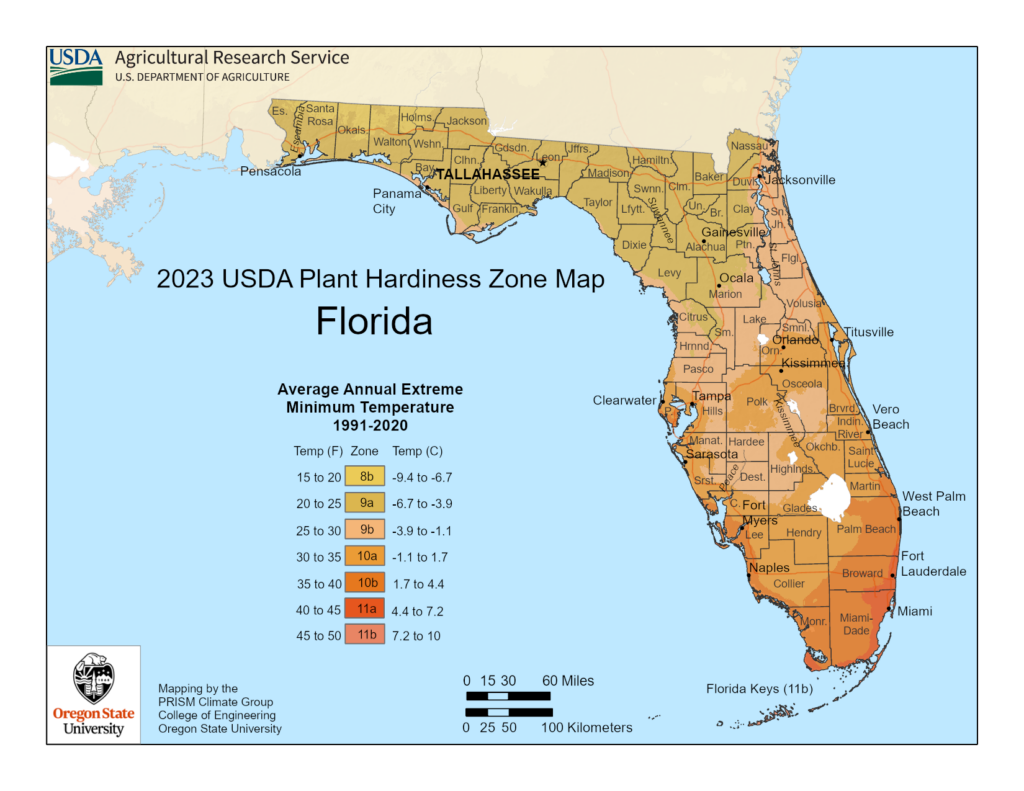Change is the only inevitability. We see it in the metamorphosis of insects, the too-quick growth of our children, the gray in our hair. From one moment to the next, the cells that comprise our bodies are shifting, changing, dying, regenerating. The planet changes too, in cyclical patterns or abruptly, suddenly, and occasionally catastrophically. Often, this is too subtle for us to notice or the changes move at the pace of stones and therefore escape us. In our efforts to grasp the changing world, we create maps, models, lists and diagrams.
What is a hardiness map?
As a tool for understanding, our maps and lists can give us a path forward, a set of parameters for how we interact with the natural world and landscapes that we inhabit. The USDA Hardiness Zones Map is one such tool — a standard by which gardeners, landscapers, foresters and urban planners can make decisions about the plant species best suited to a geographic region.
Plants evolved in a specific ecosystem, with a range of climatic adaptations. Some plants can withstand the bitter cold of an arctic winter, others can withstand frequent root inundation due to heavy rainfall, still others can avoid desiccation in the driest of deserts. Plants can be grouped by those with similar characteristics and capacity for climatic resilience and based on their historical geographic range.
The USDA Hardiness Zones Map shows the geographic range where you can expect certain groups of plants to thrive based on these characteristics. As global climate patterns shift in response to human activity, these hardiness zones can also be expected to shift and change. These shifting hardiness zones have vast implications for the diversity and composition of species in natural areas and in the built environment.
The November 2023 update to the map, which is evaluated every 10 years, shows significant zone changes for most of peninsular Florida (click on map to open larger view). Nassau County no longer has any 8b hardiness zone. Coastal Nassau County is now considered 9b and the remaining portions of the county are 9a. In other words, our county’s average annual extreme minimum temperature has increased by 5 degrees.
What does this mean for your landscape?
How does this impact us? Climate conditions have impacts on plant selection and plant resiliency. When selecting plants under the Florida Friendly Landscaping Program’s first principle, “Right Plant, Right Place,” we must consider our environmental conditions. This change is a double-edged sword, but awareness and understanding are key to better anticipating our changing environmental conditions.
Remember to always follow the “Right Plant, Right Place” principle when making your landscape decisions. To help aid this, check out the UF/IFAS online plant selection guide at https://ffl.ifas.ufl.edu/resources/apps/plant-guide/.
To see the whole USDA Hardiness Zone Map, go to https://planthardiness.ars.usda.gov/.
*Adapted from an article written by Alyssa Vinson posted November 15, 2023. Submitted by Vicki Cox, Florida Nassau County Master Gardener, for the Environmental Resources Committee.

